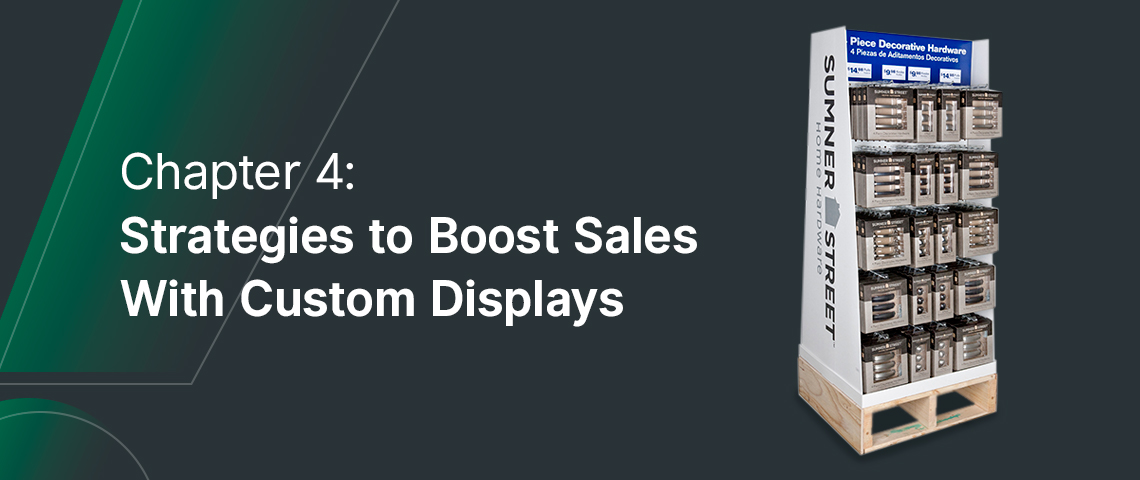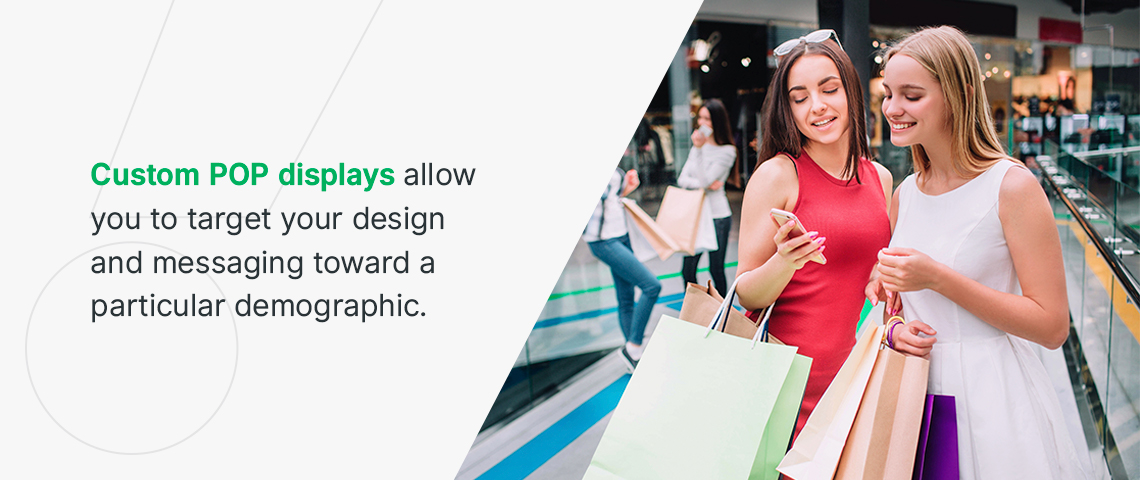Chapter 4: Strategies to Boost Sales With Custom Displays
POP displays are part of an effective marketing strategy to sell more products in retail spaces. They attract more customers to your merchandise and help them make purchasing decisions that benefit your brand. This chapter shows you strategies for boosting sales with custom displays.
What Is POP Marketing?
A point of purchase (POP) includes any area inside a store where customers make purchasing decisions. Messaging or promotions within the point of purchase are considered POP marketing. This type of marketing persuades potential buyers to make a purchase.
POP displays are a significant part of POP marketing. They draw attention to a product and highlight its features to aid decision-making. For example, a POP display for a shampoo line could explain which formula is ideal for specific hair types. Customers can quickly choose the right shampoo and pick it up from your display.
The easier you make it for shoppers to find your product and add it to their cart, the more likely they will purchase it. As a result, POP displays can boost your sales significantly.
How to Boost Sales With Custom Displays
Studies show a significant relationship between promotional displays and customer purchasing and repurchasing decisions. Designing and using custom displays correctly can help boost sales now and in the future. Consider these custom display strategies to make your POP marketing even more effective:
1. Location
Most retailers design their stores to direct shoppers down a predetermined path. Placing your display along that path will give your products maximum visibility and purchase opportunities.
Several retail chains corral their customers toward the checkout through a path of product displays. This strategy is especially effective for smaller, more affordable items. Customers are already purchasing something, so they’re more willing to add extra items that won’t raise their total significantly.
It’s also important to consider the merchandise surrounding your display. For instance, a flower company could place a retail display near the candy aisle the week before Valentine’s Day. Shoppers are more likely to grab a bouquet while they’re picking out chocolates than if they had to walk across the store to the gardening section. It also separates your merchandise from your competitors, so they choose your product before seeing any other options.
2. Incentives
Providing samples, product demonstrations and interactive experiences with your POP displays help influence customer buying decisions. For example, a display for electric toothbrushes could have test models attached so customers can experience the product before they take it home. Providing incentives attracts more customers to your display and creates a memorable first impression of your brand.
3. Upselling
Upselling is a sales technique that encourages shoppers to purchase an item that is slightly better than what they planned to buy. The key to upselling with POP displays is educating the consumer about your product’s features, so they realize that purchasing from your brand is in their best interest. Upselling boosts revenue by motivating customers to buy specialty or higher-priced items from your brand.
4. Cross-Selling
Cross-selling is another sales technique that motivates consumers to add items to their cart that complement other purchases. For instance, marketers might put a sidekick display of ketchup and mustard on an endcap with hot dog buns. By positioning your product near complementary goods, you can boost your total sales.
5. Personalization
Custom POP displays allow you to target your design and messaging toward a particular demographic. Create a personal display with relevant information and features that your target market will appreciate. For example, millennial consumers appreciate authentic brands with a social conscience. You could donate a portion of your sales to charity and create a POP display highlighting your contributions.
6. Experiences
As online shopping has become increasingly popular, a tangible shopping experience has helped retailers prevail. Surveys show that 62% of customers continue to shop in physical stores so they can see, touch, feel and try out the items.
POP displays are a versatile tool that you can use to create an interactive retail experience. They make items easily accessible for shoppers to touch and explore. You can take it one step further by creating a tactile experience around your display. For instance, you can string your products like ornaments from a POP display shaped like a pine tree during the holidays. Shoppers will delight in the Christmas spirit while pulling the item from a branch and adding it to their cart.
Promote Your Products With Creative Displays Now
POP marketing provides an opportunity to convince potential customers to purchase your merchandise. The placement and design of your POP display can significantly impact revenues. Learn more POP display strategies to increase sales with Creative Displays Now.


